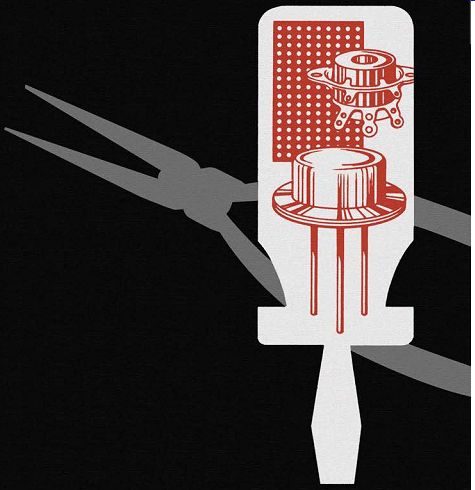AMAZON multi-meters discounts AMAZON oscilloscope discounts
SECTION 1 BASIC TYPES OF ELECTRONIC CONSTRUCTION
The Metal Chassis--Miscellaneous Tools--Rack and Panel Etched Circuits-Electronic Circuit Encapsulation
SECTION 2 ELECTRONIC TOOLS AND HOW TO USE THEM
The Basic Tool Kit-Soldering Tools-Special Etched-Circuit Soldering Techniques-Metalworking Tools
SECTION 3 ELECTRONIC COMPONENTS--MOUNTING AND WIRING TECHNIQUES
Resistors - Potentiometers - Capacitors – Transformers -Filter Chokes
SECTION 4 THE ELECTRONIC BREADBOARD
Breadboards for Vacuum-Tube Circuits-Breadboards for Semiconductor Circuits
SECTION 5 SEMICONDUCTOR PROJECT CONSTRUCTION TECHNIQUES
Working With Transistors - Power Transistor Mounting
SECTION 6 MINIATURIZATION AND MICROMINIATURIZATION TECHNIQUES
Miniature Electronic Components - Phenolic Perforated Board as Chassis For Miniature Projects-Encapsulating Miniature Circuits - Microminiaturization - Experimenting with Integrated Circuits
Overview of this Guide
(Note: this guide is based on now-classic Howard-Sams and TAB series of books. The content, while dated, still provides solid foundations on electronics DIY)

This guide provides an in-depth description of the various commonly used methods of constructing electronic projects.
In the sections that follow, you learn the proper method of circuit layout, metal chassis and panel layout, and drilling and punching. The various types of tools used in electronic project construction and their proper use are thoroughly covered.
Electronic components, such as resistors, capacitors, transformers, coils, etc., and their characteristics are de scribed as an aid to project construction. The physical representation of many components in common use, though not ordinarily employed in breadboarding, are presented in Section 3.
A Section is devoted to the rather specialized construction techniques required for semiconductor circuit projects. Another Section describes the proper methods of etched circuit board preparation, construction, and circuit layout.
Throughout the guide, attention is given to the tools, hard ware, components, and accessories (such as racks and cabinets) that make electronic project construction easier. Several tools that the novice project builder may not be familiar with (such as automatic wire strippers, chassis punches, and circle cutter) are illustrated.
A well regulated power supply is essential when experimenting with electronic circuits. Both the vacuum tube and semiconductor types are covered. A description of how these circuits function, as well as the physical layout and schematic diagrams, is presented in Section 4.
A wide variety of integrated circuits, at a reasonable cost, are available to the experimenter. Their physical and electrical characteristics, and the proper technique of using these units in breadboard circuits are covered in the last Section.
Also see: